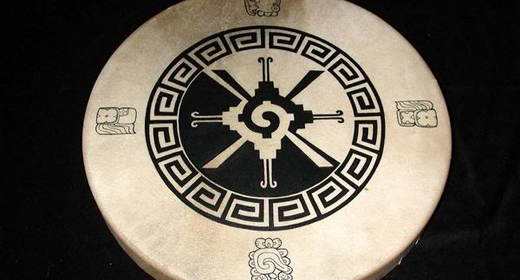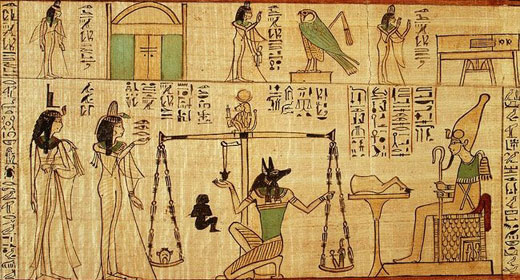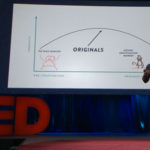by Théun Mares: For many people, the term Toltec refers to a Mesoamerican culture…

It is also widely associated with the practices of sorcery/shamanism, deriving from a popular misreading of the books of Carlos Castaneda.
However, for a vast expanse of time and in various parts of the world, Toltec has meant “A man or woman of knowledge.” In the Toltec context, the pursuit of true knowledge bears no relation to the practices of sorcery/shamanism with which the word Toltec is today so often associated. In relation to this, the origins of the word Toltec are much older than is generally credited – even by our modern-day shamans.
Since much of the current popular views have been erroneously based upon a misreading of the books of anthropologist Carlos Castaneda, it may be useful to look at what is actually contained in his books, beginning with what is said about the origins and true meaning of the word Toltec, and moving on to what is said about the practices of sorcery/shamanism.
In “The Fire From Within,” we find the following statement concerning the Toltec tradition, and in particular the mastery of awareness:
“In this case the action at hand was, naturally, the elucidation of the mastery of awareness. Don Juan understood the mastery of awareness as being the modern-day version of an extremely old tradition, which he called the tradition of the ancient Toltec seers.”
Don Juan, Castaneda’s teacher, and a true nagal of this Toltec tradition goes on to clarify: “Ages before the Spaniards came to Mexico,” he said, “there were extraordinary Toltec seers, men capable of inconceivable deeds. They were the last link in a chain of knowledge that extended over thousands of years.”
Castaneda then continues; “Don Juan explained then that his use of the term “Toltec” did not correspond to what I understood it to mean. To me it meant a culture, the Toltec Empire. To him, the term “Toltec” meant “man of knowledge.”
“He said that in the time he was referring to, centuries or perhaps even millennia before the Spanish Conquest, all such men of knowledge lived within a vast geographical area, north and south of the valley of Mexico, and were employed in specific lines of work: curing, bewitching, storytelling, dancing, being an oracle, preparing food and drink. Those lines of work fostered specific wisdom, wisdom that distinguished them from average men. These Toltecs, moreover, were also people who fitted into the structure of everyday life, very much as doctors, artists, teachers, priests, and merchants in our own time do.”
In “The Second Ring of Power”, one of Castaneda’s fellow-apprentices explains more about the meaning of the word Toltec: “”The Nagual told us that we are Toltecs. All of us are Toltecs. He said that a Toltec is the receiver and holder of mysteries. The Nagual and Genaro are Toltecs. They gave us their special luminosity and their mysteries. We received their mysteries and now we hold them.”
“His usage of the word Toltec baffled me. I was familiar only with its anthropological meaning. In that context, it always refers to a culture of Nahuatl-speaking people in central and southern Mexico which was already extinct at the time of the Conquest.
“Why did he call us Toltecs?” I asked, not knowing what else to say.
“Because that’s what we are. Instead of saying that we are sorcerers or witches, he said that we are Toltecs.””
Further in the same book, another fellow-apprentice confirms and amplifies this:
“”The Nagual told me that sorcerers used to be called Toltecs in his benefactor’s language,” she replied.
“And what language was that, Gorda?”
“He never told me. But he and Genaro used to speak a language that none of us could understand. And here, between all of us, we understand four Indian languages.”
“Did don Genaro also say that he was a Toltec?”
“His benefactor was the same man, so he also said the same thing.”
“From la Gorda’s responses I could surmise that she either did not know a great deal on the subject or she did not want to talk to me about it. I confronted her with my conclusions. She confessed that she had never paid much attention to it and wondered why I was putting so much value on it. I practically gave her a lecture on the ethnography of central Mexico.
“A sorcerer is a Toltec when that sorcerer has received the mysteries of stalking and dreaming,” she said casually. “The Nagual and Genaro received those mysteries from their benefactor and then they held them in their bodies. We are doing the same, and because of that we are Toltecs like the Nagual and Genaro.””
The clear conclusion from these excerpts is; firstly, that the word Toltec has a very different meaning to that currently attributed to it; secondly, that it is far older than is usually postulated; and thirdly that it was in current use, not only at the time of the Spanish conquests, but also at the time that Castaneda wrote his books. Therefore, in its wider sense, it is incorrect to state that the term Toltec simply refers to a Mesoamerican civilisation – a civilisation that was already extinct well before the time of the Conquest.
In relation to the current use of the term Toltec as meaning “a man or woman of knowledge,” in “The Fire From Within,” don Juan specifically states; “”I am a warrior who sees. In fact, all of us are los nuevos videntes: the new seers.” Later, Castaneda questions him on what he means by this:
“”Were there a great many new seers during the Conquest?” I asked.
“At the beginning there were. Near the end there were only a handful. The rest had been exterminated.”
“What about in our day, don Juan?” I asked.
“There are a few. They are scattered all over, you understand.”
Outside of Castaneda himself, there is much evidence that points clearly to the fact that the term Toltec was more widely used and also older than currently stated.
Miguel León-Portilla is a Mexican anthropologist and historian, and an authority on Nahuatl thought and literature. He has maintained that in Nahua legend, the Toltec were the originators of all civilisation.
This points clearly to the much older origins of the Toltecs and fits in with much other historical evidence, firstly relating to the Nahua, and secondly to the earlier history of the Toltecs.
In terms of earlier Nahuatl migrations into the Valley of Mexico, Tlakaelel (Francisco Jímenez Sánchez) has found persuasive evidence throughout the American continent of an ancient Toltec migration known as the Four Arrows, since it went in four different directions. His theories are supported by many petroglyphs; as well as place names, such as Tulare and Tularosa, which are Nahuatl in origin rather than Spanish or English.
In addition to these, many old maps also support the theories of older and more widespread origins. Thus, according to Roberto Rodriguez & Patrisia Gonzales in “The Story of Maps: Mesoamerica in North America,” virtually all early chroniclers agreed that the Aztec/Mexica were the last in a series of migrating waves of nations/tribes to migrate from somewhere in the north.
Most allude to three major waves; first the Toltecas, then the Chichimecas, then the Azteca/Mexica nations, which purportedly migrated with seven other peoples. Of particular note is the fact that many chroniclers do cite an earlier migration of the Nahuatl-speaking peoples as having come from across the ocean, landing in what is today the Panuco River. Half the people purportedly went north, the other half went south.
Charles A. Shook, (1876-1939) in his book, “Cumorah Revisited,” takes the matter further: “With this century [6th] we have the advent of the Toltecs into Mexico. They were a Nahuan tribe and the most prominent representative of that people’s culture of which we have any record. The unanimous testimony of tradition is that they came from the north, from the mysterious Hue Hue Tlapallan (Old Old Red Land), the nursery of the Nahua people, which has been variously located. Briart locates it near Lake Tulare in California; Becker, on the Rio Colorado; and Baldwin, Short and Foster in the Mississippi Valley.”
How did these Toltecs arrive there? In “Atlantis – The Antediluvian World,” by Ignatius Donnelly, we find the following account:
“The native Mexican historian, Ixtlilxochitl, gave this as the Toltec legend of the Flood:
“It is found in the histories of the Toltecs that this age and first world, as they call it, lasted 1716 years; that men were destroyed by tremendous rains and lightning from the sky, and even all the land, without the exception of anything, and the highest mountains, were covered up and submerged in water fifteen cubits (caxtolmolatli); and here they added other fables of how men came to multiply from the few who escaped from this destruction in a “toptlipetlocali;” that this word nearly signifies a close chest; and how, after men had multiplied, they erected a very high “zacuali,” which is to-day a tower of great height, in order to take refuge in it should the second world (age) be destroyed. Presently their languages were confused, and, not being able to understand each other, they went to different parts of the earth.
“The Toltecs, consisting of seven friends, with their wives, who understood the same language, came to these parts, having first passed great land and seas, having lived in caves, and having endured great hardships in order to reach this land; . . . they wandered 104 years through different parts of the world before they reached Hue Hue Tlapalan, which was in Ce Tecpatl, 520 years after the Flood.” (“Ixtlilxochitl Relaciones,” in Kingsborough’s “Mex. Ant.,” vol. ix., pp. 321, 322.)’
If we look even further afield than these mainly historical and anthropological sources, we can find many references to the term Toltec in a number of ancient mystical traditions. These point to much older origins still.
For example, in Rudolph Steiner’s “Cosmic Memory (Prehistory of Earth and Man)” we find this allusion: “This kind of social communal life became fully developed only among the third subrace, the Toltec.”
The topic of the earlier origins is more fully developed in a wide variety of Theosophical texts.
In “The Secret Doctrine” H.P. Blavatsky also alludes to these ancient origins when she discusses the existence of a very ancient book: “…there was a time when its language (the Sen-zar) was known to the Initiates of every nation, when the forefathers of the Toltec understood it as easily as the inhabitants of the lost Atlantis…”
It is in “The Secret Doctrine” that one finds a clue as to why there are not more written records of our early history – records that might also reveal the true nature and extent of the Secret Mysteries, which have become appropriated and debased to form what we have come to think of as our religions. There it is said; “It has been claimed in all ages that ever since the destruction of the Alexandrian Library, every work of a character that might have led the profane to the ultimate discovery and comprehension of some of the mysteries of the Secret Science, was, owing to the combined efforts of the brotherhoods, diligently searched for. It is added, moreover, by those who know, that once found, save three copies left and stored safely away, such works were all destroyed.”
Everything that now remains in the public domain is but the palest shadow of what had existed before. Today the need for secrecy has served its purpose. However, whilst many of the ancient secrets are starting to be revealed, the plain fact is that because of the widespread destruction of virtually all the ancient records, there is little hard evidence available to relate these truths to what has happened in the past.
Having said that, a fair amount of indications exist within Theosophical literature for the diligent researcher into ancient history. But in terms of the earlier Toltec migrations, it will suffice to quote a short passage from the work by Lieut–Col. A.E. Powell called, “The Solar System.” “The Toltecs, having emigrated chiefly to the west, spread abroad and flourished on what are now the continents of North and South America. The Peruvian empire under their Inca sovereigns, about 14,000 years ago, may be regarded as a traditional though faint echo of the golden age of the Toltecs on the mother-continent of Atlantis.”








































